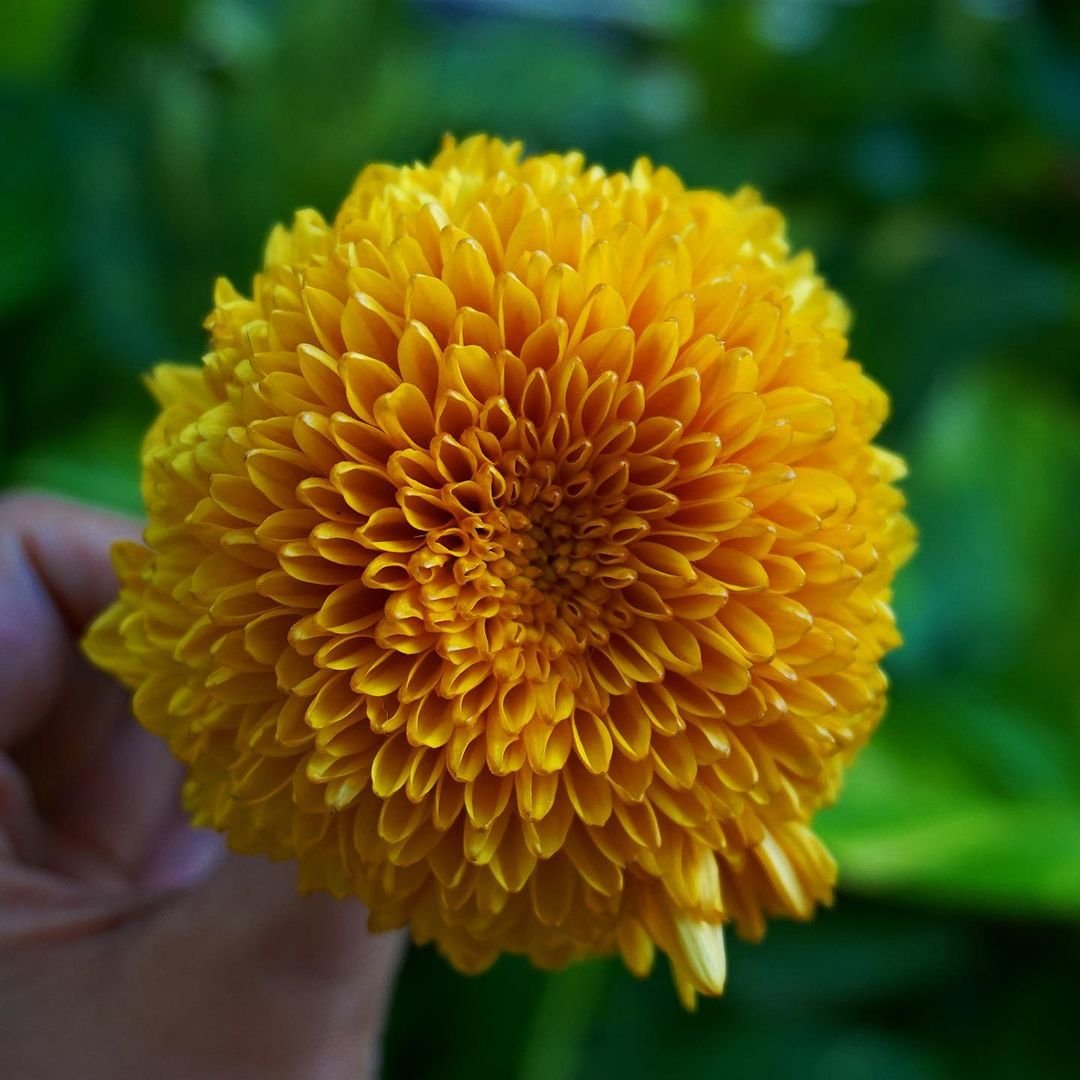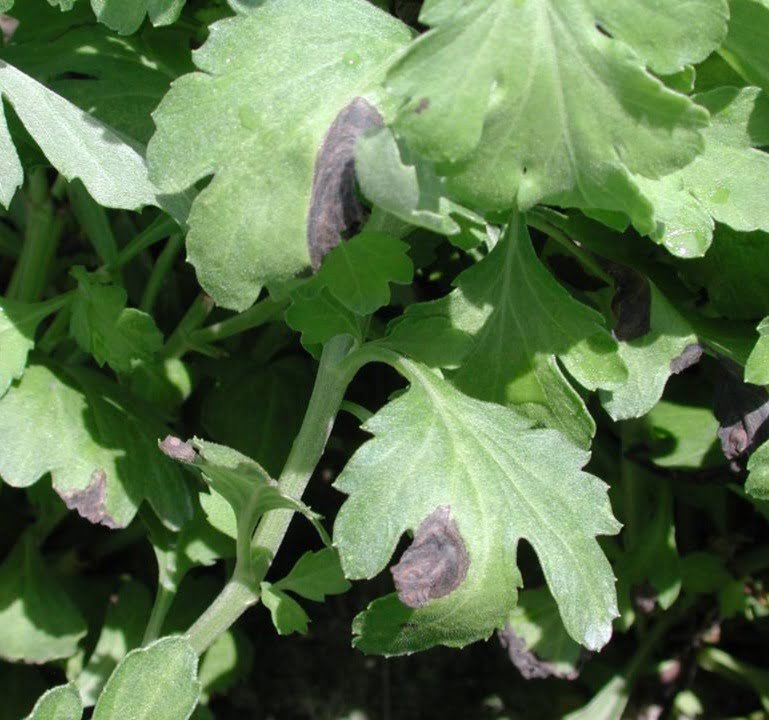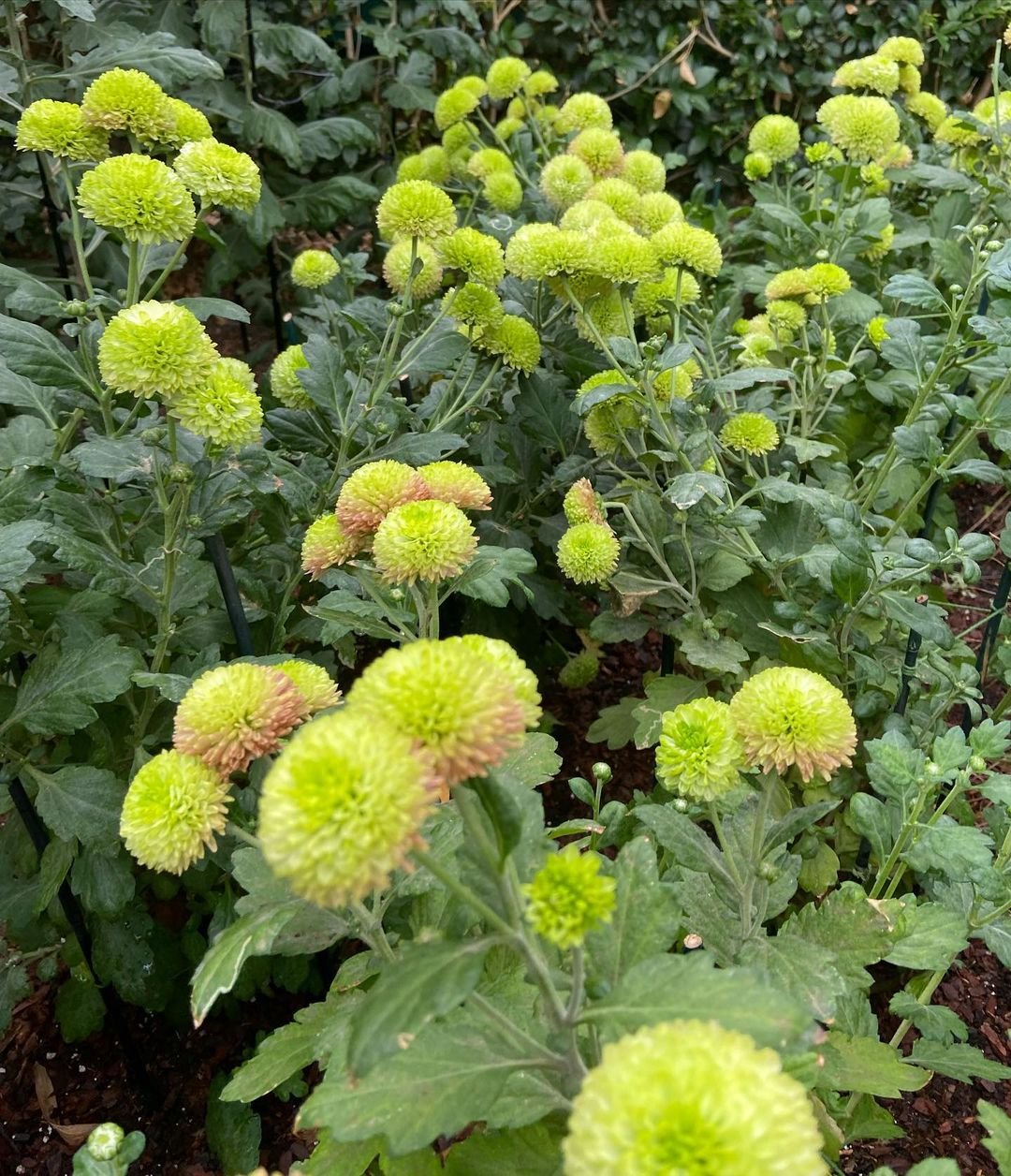Discover the ultimate guide to growing and caring for Pompom Chrysanthemums. Learn essential tips for planting, watering and maintaining these stunning blooms.
Pompom chrysanthemums are beautiful flowers that can make your garden look amazing. These round, puffy blooms come in many colors and are fun to grow. In this guide, we’ll show you how to plant, grow and take care of pompom chrysanthemums so you can enjoy their beauty in your own garden.
Here’s a concise information chart about Pompom Chrysanthemums:
| Aspect | Information |
|---|---|
| Botanical Name | Chrysanthemum spp. (various species and cultivars) |
| Common Name | Pompom Chrysanthemums |
| Appearance | Herbaceous perennial plants with dense, globular flower heads made up of numerous small, tubular petals. |
| Leaf Shape | Lobed, toothed leaves |
| Plant Type | Herbaceous perennial |
| Zones | USDA zones 5-9, depending on the species and cultivar |
| Sun Exposure | Full sun to partial shade |
| Soil Type | Well-drained, fertile soil |
| Watering | Regular watering during growth and flowering |
| Fertilization | Moderate fertilization with balanced fertilizer during active growth |
| Growth Habit | Upright and bushy |
| Height/Spread | Typically 1-3 feet tall, spreading gradually |
| Pests | Susceptible to aphids, spider mites, and fungal diseases like powdery mildew |
| Uses | Ornamental plants in gardens, borders, and containers; cut flowers for floral arrangements |
| Special Features | Large variety of colors and forms available; long-lasting blooms from late summer to fall; excellent for attracting pollinators |
What are Pompom Chrysanthemums?

Pompom chrysanthemums are a type of chrysanthemum flower. They get their name from their round, fluffy shape that looks like a cheerleader’s pompom. These flowers come in many colors like white, yellow, pink and purple. They usually bloom in the fall, making them perfect for adding color to your garden when other flowers are fading.
Why Grow Pompom Chrysanthemums?
There are many good reasons to grow pompom chrysanthemums:
- Colorful blooms: They add bright colors to your garden in fall.
- Easy to grow: They don’t need a lot of special care.
- Long-lasting: The flowers can bloom for several weeks.
- Great for cutting: They make beautiful bouquets for your home.
- Attract butterflies: These flowers can bring pretty butterflies to your garden.
How to Plant Pompom Chrysanthemums

Planting pompom chrysanthemums is easy. Here’s what you need to do:
- Choose the right spot: Pick a place in your garden that gets lots of sun. Chrysanthemums like at least 6 hours of sunlight each day.
- Prepare the soil: Make sure the soil drains well. If your soil is heavy clay, mix in some compost to help it drain better.
- Plant at the right time: The best time to plant is in spring after the last frost. You can also plant in early fall, but give the plants at least 6 weeks before the first frost to get settled.
- Dig a hole: Make a hole twice as wide as the plant’s root ball and just as deep.
- Place the plant: Put the plant in the hole and fill in with soil. Make sure the top of the root ball is level with the ground.
- Water well: Give your new plant a good drink of water to help it settle in.
- Space them right: Plant pompom chrysanthemums about 18-24 inches apart to give them room to grow.
Caring for Your Pompom Chrysanthemums
Taking care of pompom chrysanthemums is pretty easy. Here’s what you need to do:
- Watering: Water your plants regularly, especially when they’re first getting established. Give them about 1 inch of water per week. Proper watering is important for healthy plants.
- Fertilizing: Feed your chrysanthemums with a balanced fertilizer in spring when new growth starts. Don’t fertilize too late in the season as this can reduce blooming.
- Pinching: To make your plants bushy and full of flowers, pinch off the tips of new growth in spring and early summer. Stop pinching by mid-July to allow flower buds to form.
- Mulching: Add a layer of mulch around your plants to help keep the soil moist and control weeds.
- Winter care: In cold areas, cover the plants with a layer of straw or leaves after the first frost to protect them over winter.
- Dividing: Every 3-4 years, dig up and divide your chrysanthemum plants in the spring to keep them healthy and vigorous.
Dealing with Pests and Diseases

While pompom chrysanthemums are pretty tough, they can sometimes have problems. Here are some common issues and how to deal with them:
- Aphids: These tiny bugs can damage your plants. Spray them off with water or use insecticidal soap.
- Leaf spot: This fungal disease causes dark spots on leaves. Remove affected leaves and avoid watering from above.
- Powdery mildew: This looks like white powder on leaves. Improve air circulation and use a fungicide if needed.
- Root rot: This happens when soil is too wet. Make sure your soil drains well to prevent this problem.
Using Pompom Chrysanthemums in Your Garden

Pompom chrysanthemums are versatile and can be used in many ways:
- Flower beds: Plant them in groups for a big impact.
- Containers: They grow well in pots on a patio or balcony.
- Cut flowers: Use them in fall bouquets and arrangements.
- Border plants: Plant them along walkways or garden edges.
- Companion planting: They look great with other fall flowers like asters and sedums.
Frequently Asked Questions
1. How long do pompom chrysanthemums bloom?
They usually bloom for 4-6 weeks in the fall.
2. Can I grow pompom chrysanthemums indoors?
They’re best grown outdoors, but you can bring potted chrysanthemums inside for a short time when they’re blooming.
3. Do pompom chrysanthemums come back every year?
Yes, they’re perennials in many areas. In very cold regions, they might need extra protection to survive winter.
4. How often should I water my pompom chrysanthemums?
Water them when the top inch of soil feels dry. This is usually about once a week, but may be more often in hot weather.
5. Can I change the color of my pompom chrysanthemums?
The flower color is determined by genetics, so you can’t change it. But you can plant different colored varieties to get the colors you want.
Growing pompom chrysanthemums is a fun and rewarding way to add beautiful fall color to your garden. With the right care, these fluffy flowers will bloom year after year, bringing joy and beauty to your outdoor space. Remember to give them plenty of sun, water them regularly and protect them in winter and you’ll have a gorgeous display of pompom chrysanthemums to enjoy every autumn.
For more information on growing chrysanthemums and other flowers, check out the Cooperative Extension System website. They have lots of great gardening tips and advice.